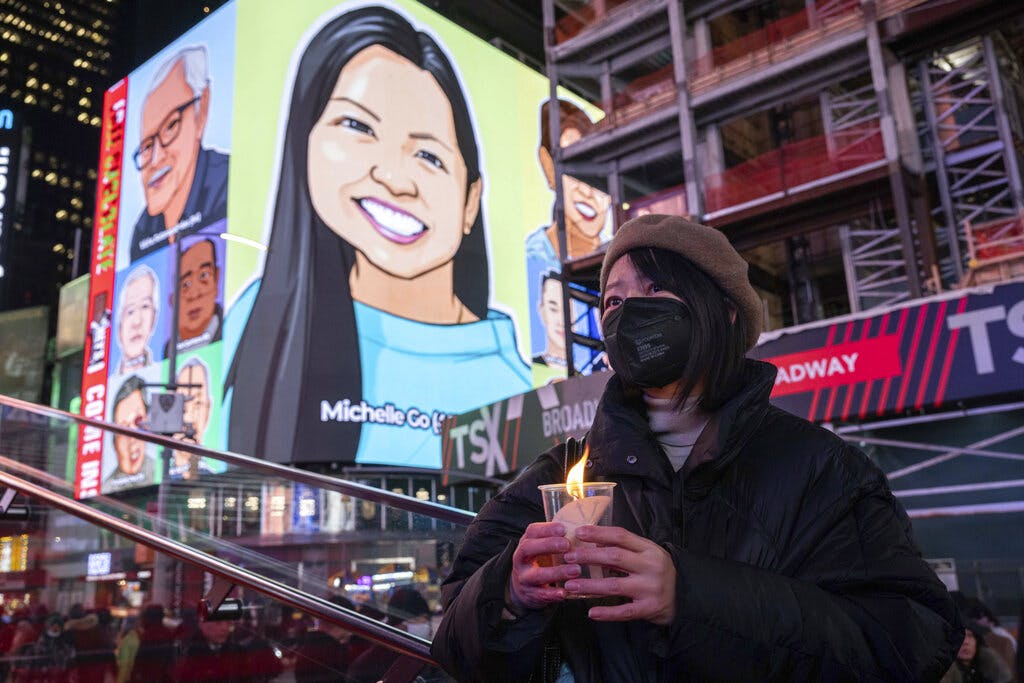New Effort To Require Mental Health Treatment Follows High-Profile Crimes; Some Fear Overreach
Democrats, including Governor Hochul, are backing a renewed and expanded ‘Kendra’s Law’ — which gives judges the option to require the mentally ill to receive psychiatric treatment under supervision — despite opposition from civil rights advocates.

A New York judge has found the man who pushed an Asian-American woman in front of a subway train in January mentally unfit to stand trial, the latest reminder of how a series of attacks is prompting efforts to renew and expand the state’s “Kendra’s Law.”
Democrats, including Governor Hochul, are backing the law — which gives judges the option to require the mentally ill to receive psychiatric treatment under supervision — despite opposition from civil rights advocates.
The law was established in 1999 after a man with schizophrenia pushed Kendra Webdale into the path of a New York City subway train, killing her. A similar situation occurred in January when a schizophrenic man, Martial Simon, allegedly killed 40-year-old Michelle Go, by shoving her in front of a subway train at Times Square station.
That and other crimes allegedly committed by mentally ill perpetrators have reignited a discussion around mental health and the homeless. A Democratic state senator, Diane Savino, has introduced legislation that would add to Kendra’s Law by providing loosening constraints on court-mandated treatment. The bill also would require those in treatment to be assessed for the possibility of further psychiatric hospitalization or outpatient treatment.
The New York Civil Liberties Union is among the opposition to forcing anyone to receive medical treatment, claiming “Kendra’s Law unconstitutionally expands the circumstances under which the State may compel people with mental health challenges to undergo treatment against their will.”
Kendra’s Law isn’t a one-fits-all program, said Ms. Savino: “It works for people who are capable of participating in their own care plan.”
In several high-profile recent crimes the individuals accused were homeless and had few, if any, known social ties. These individuals usually can’t sustain mental health treatment plans alone, often resulting in relapses into dysfunctional or dangerous behavior.
“What is the fundamental problem for the individual who pushed Michelle Go off the platform?” she asked. “How does it come to pass that an individual like that is living in the subway and cycling in and out of crisis, in the emergency room, or maybe Rikers Island?”
The case of Frank Abrokwa, who allegedly smeared feces into a woman’s face at a Bronx subway station on February 21, has also been cited as an example of the mentally ill running afoul of the criminal justice system. Prior to that arrest he had been freed after being charged with several misdemeanors that were not eligible for incarceration under New York’s bail reform.
“That’s a situation where New York’s need to evaluate this part of the whole discussion around bail reform,” Ms. Savino said: “Why was a case like that recommended for supervised release?”
On March 21, Mr. Abrokwa was arrested for allegedly shattering a window of a Harlem storage facility. He is now being held on $5,000 bail with a pending psychiatric evaluation.
Of Mr. Abrokwa’s case, Mayor Adams said, “It is the result of a failed mental health system, a failed housing and support system, and failing criminal justice laws that allow someone with a history of violence who poses a clear threat to public safety to just walk out of court.”
Similarly, Ms. Savino ties the rise in crime to the closing of psychiatric facilities like Pilgrim Psychiatric Center and Kingsboro Psychiatric Hospital. She also pointed to low reimbursement to hospitals under Medicaid.
“Coupled with the demands during Covid, where they needed every bed, we just closed our psych beds. We have not invested in supported housing,” Ms. Savino said. “The continuum of care starts with recognizing that a person who thinks it’s okay to live and wallow in their own excrement in a subway tunnel is incapable of caring for themselves.”
The Manhattan Institute has shown Kendra’s Law to be a success. Its data found a reduction of 70 percent in the rate of incarceration and homelessness among those subject to the law’s requirements.
Others see Kendra’s Law as government overreach. A staff attorney at the New York Civil Liberties Union, Beth Haroules, says broadening the law would “bring in people who are unhoused, who wouldn’t necessarily need a Kendra’s Law standard as it’s currently written.”
As part of Ms. Hochul’s reported “10-point plan” for criminal justice reform, Kendra’s Law would be renewed for five years. It would utilize similar language to Ms. Savino’s bill in addressing court-mandated treatment. The $21 million program includes funding for 10,000 supportive housing units and up to 20 “Safe Option Support” teams of mental health professionals.
Ms. Haroules disagreed with the governor’s move to include Kendra’s Law in the budget, suggesting the need to examine the “very rich data” afforded through the law, and to be wary of stereotyping criminality as a trait of mental illness. Neither politician nor advocate sees any of the initiatives as long-term solutions.

